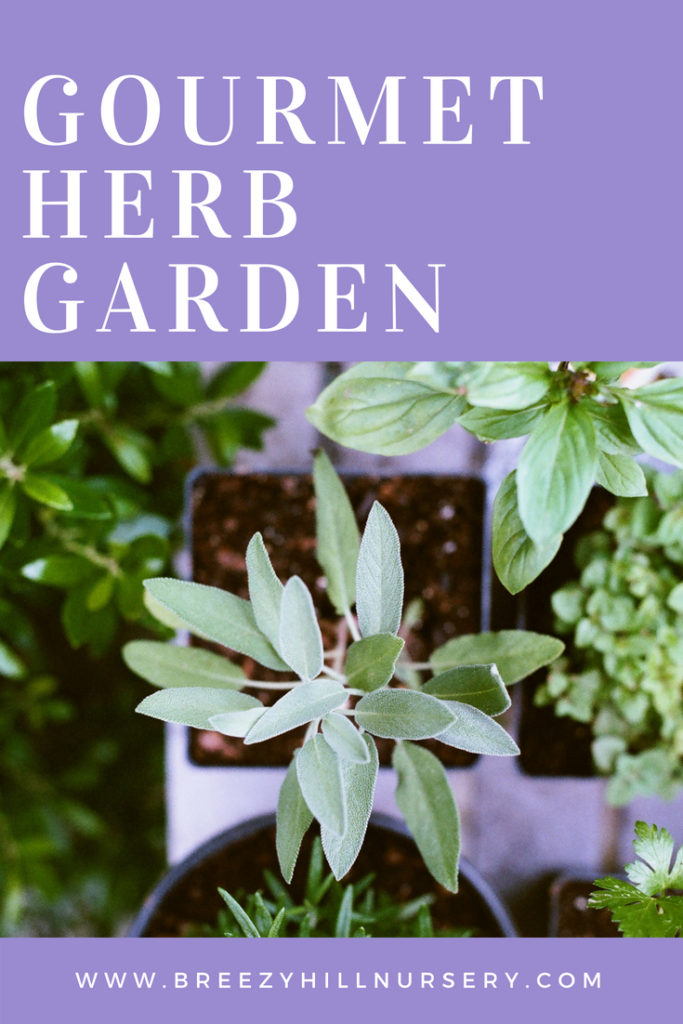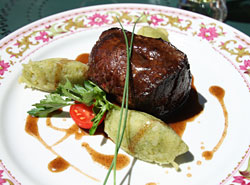It’s Easier Than You Think To Create A Gourmet Herb Garden
BY KARI-LYNN O’NEIL
Everywhere you turn these days you find a celebrity chef, a five-star restaurant or tv show touting organic this or that. Now I’ve seen this “celebrity chef” thing happen before. One guy finds something (usually it sounds cooler than it tastes) and suddenly it’s “in” and the price goes through the roof. It’s like high school. With calories.
This time though, it’s the real deal. Organic food actually tastes better. I’ve been a gourmet cook much longer than I’ve been growing anything that even resembles a plant, and I have to say organic gardening isn’t hard either.
If you’re a first-time “food gardener” and the idea of plowing up the back of your yard and tending to crops all summer isn’t your idea of a good time, I’m right there with you.


If you’re a first-time “food gardener” and the idea of plowing up the back of your yard and tending to crops all summer isn’t your idea of a good time, I’m right there with you. You’ll be happy to know even baby steps will leave your friends and family singing your praises at meal time.
I’ve always been a big fan of the fresh, the few and the flavorful when it comes to cooking. It’s a belief Provincial French, Italian and Japanese cooks all have. You cook what’s in season and let their flavor shine because it’s the one time of the year you get to enjoy that flavor. Growing your own herbs is the secret to turning a few ingredients into a fabulous meal.
Stepping out to your garden and pulling the herbs releases the scent and the oils in your hands. Fresh herbs offer a completely different sensory experience than their dry grocery store counterparts. It is in this way, at the very tender age of nine, that I began to learn to cook. I lived next door to an Italian family, and they taught me the way to become a chef is by tasting and smelling spices. When you are familiar with them, it is easier to understand how each flavor will compliment or contrast with other ingredients.
Using fresh herbs will turn you into a fabulous cook, and you’ll enjoy cooking more. There is something soulfully satisfying about stepping into your garden and selecting ingredients to prepare a meal for the people you love. The flavor is more intense, the color is brighter and the food is more fragrant. Of course, wide smiles, compliments and cleaner plates are also par for the course.
Here’s A Starter Gourmet Organic Herb Garden
Thyme, Rosemary, Basil, Bay Leaves, Oregano, Chives, Sage, Cilantro, Nasturtium
The best part is you can pick and choose based on your taste. There are a lot of varieties within some of these herbs, but they are all very easy to grow. I have an area close to my kitchen and next to our grill on the patio. Chives are lovely with small purple blooms. I grow Rosemary in pots and plant trailing vines. Some herbs are as beautiful as they are useful, and you’ll love the way your patio smells after the rain.
The how to’s:
- Plant herbs in average garden soil with organic matter added to improve texture and drainage.
- Choose a site that receives at least 6 hours of direct sun each day.
- Avoid ground where water stands or runs during heavy rains.
- Apply balanced fertilizers sparingly to leafy, fast-growing herbs. Heavy applications of fertilizer, especially those containing large amounts of nitrogen, will decrease the concentration of essential oils in the lush green growth.
Here are some of my favorite ways to use them. Once you start working with them, you’re sure to find some fun ways to spice up your family recipes too!
Nasturtium —These beautiful flowers are edible and can be left whole to decorate a plate, or you can julienne them into ribbons of bright color and use them to finish a dish. They have a very soft flavor of white pepper.
Basil — Basil has been planted and used in organic gardening to improve the flavor of tomatoes and repel flying insects for centuries! If you are using this fresh, and are putting it in a heated dish, wait until the last minute. Basil will turn bitter if cooked too long. Fresh, raw basil is amazing added in salads, on sandwiches, tossed on top of pasta or pizza. Basil releases its essential oils at 85°F – 90°F, so if you plan on creating flavored olive oil for dipping bread, be sure the oil is at least this high, but not so high that the basil becomes bitter.
Thyme — Oh, how I love this little plant. Not only is it great for cream sauces, soups, salads, laid on top fish while poaching or grilling, and in citrus honey glazes, it’s a ground cover that spreads like crazy and chokes out any weed in sight!
Bay Leaves — This is a beautiful plant. Use them in soups, stews, casseroles, stocks, sauces, and garnishes. Fresh Bay is stronger than dry. Immature leaves should not be used because they are very acidic. There is no way you’ll ever use all the leaves on this plant, but people love getting a little package of your homegrown organic bay leaves as gifts.
Cilantro — A relative to Parsley, this herb makes it easy to turn the plainest dish into something special. As with any small, leafy herb, tossing a hand full into a small cup and snipping away will quickly chop this spice down. Now it’s a matter of how you want to dress it up. Toss it with diced tomatoes, onion, sea salt and pepper and lime as a mild salsa. Heat it up with jalapeno. Or get creative and mix it up with chopped mango, red bell pepper, leek, and lime and serve it over fresh grilled salmon. Herbs like this can be stirred into mayo for sandwiches like you see in restaurants.
Rosemary, Sage, Thyme, Chives — Compound butter! Compound kinds of butter are a staple in French cooking and it’s a quick way to “gourmet up” a dish. This butter can be used as a spread, tossed over pasta, sliced thinly and laid over grilled steak or fish and tossed with steamed vegetables. I use a similar recipe at Thanksgiving beneath the turkey skin prior to roasting to keep the meat moist and provide extra flavor. Of course, these are many of the same herbs used in stuffing and wild rice recipes too.
1 pound butter
3 to 4 tablespoons extra virgin olive oil
2 tablespoons fresh chives, chopped
1 tablespoon thyme, chopped
1 tablespoon sage, chopped
1 tablespoon rosemary, chopped
Chop the butter into uniform chunks using the dough scraper.
Place the oil into the food processor and add the chives. Process until the chives are finely chopped. Add the remaining herbs and blend until the herbs have colored the oil. Using the whisk attachment, whip the butter in the mixer’s work bowl at medium speed until it softens and lightens in color, about 5 to 7 minutes.
Add the herb oil to the butter and beat for another 2 minutes until oil is fully incorporated. Remove butter from bowl and spoon onto parchment paper or plastic wrap. Roll into a log, using the edge of a baking sheet to form a tight log. Chill for 2 hours before serving.

Comments are closed.